MOBILE RADIO
CHANNELS
Contents
Preface to the Second Edition
List of Acronyms
List of Symbols
1 Introduction
1.1 The Evolution of Mobile Radio Systems
1.2 Basic Knowledge of Mobile Radio Channels
1.3 Structure of this Book
2 Random Variables, Stochastic Processes, and Deterministic Signals
2.1 Random Variables
2.1.1 Basic Definitions of Probability Theory
2.1.2 Important Probability Density Functions
2.1.3 Functions of Random Variables
2.2 Stochastic Processes
2.2.1 Stationary Processes
2.2.2 Ergodic Processes
2.2.3 Level-Crossing Rate and Average Duration of Fades
2.2.4 Linear Systems with Stochastic Inputs
2.3 Deterministic Signals
2.3.1 Deterministic Continuous-Time Signals
2.3.2 Deterministic Discrete-Time Signals
2.4 Further Reading
Appendix 2.A Derivation of Rice’s General Formula for the Level-Crossing Rate
3 Rayleigh and Rice Channels
3.1 System Theoretical Description of Multipath Channels
3.2 Formal Description of Rayleigh and Rice Channels
3.3 Elementary Properties of Rayleigh and Rice Channels
3.3.1 Autocorrelation Function and Spectrum of the Complex Envelope
3.3.2 Autocorrelation Function and Spectrum of the Envelope
3.3.3 Autocorrelation Function and Spectrum of the Squared Envelope
3.4 Statistical Properties of Rayleigh and Rice Channels
3.4.1 Probability Density Function of the Envelope and the Phase
3.4.2 Probability Density Function of the Squared Envelope
3.4.3 Level-Crossing Rate and Average Duration of Fades
3.4.4 The Statistics of the Fading Intervals of Rayleigh Channels
3.5 Further Reading
Appendix 3.A Derivation of the Jakes Power Spectral Density and the Corresponding Autocorrelation Function
Appendix 3.B Derivation of the Autocorrelation Function of the Envelope
Appendix 3.C Derivation of the Autocovariance Spectrum of the Envelope Under Isotropic Scattering Conditions
Appendix 3.D Derivation of the Level-Crossing Rate of Rice Processes with Different Spectral Shapes of the Underlying Gaussian Random Processes
4 Introduction to Sum-of-Sinusoids Channel Models
4.1 Principle of Deterministic Channel Modelling
4.2 Elementary Properties of Deterministic Sum-of-Sinusoids Processes
4.3 Statistical Properties of Deterministic Sum-of-Sinusoids Processes
4.3.1 Probability Density Function of the Envelope and the Phase
4.3.2 Level-Crossing Rate and Average Duration of Fades
4.3.3 Statistics of the Fading Intervals at Low Signal Levels
4.3.4 Stationarity and Ergodicity of Sum-of-Sinusoids Processes
4.4 Classes of Sum-of-Sinusoids Processes
4.5 Basics of Sum-of-Cisoids Channel Models
4.5.1 Elementary Properties of Stochastic Sum-of-Cisoids Processes
4.5.2 Probability Density Function of the Envelope and Phase
4.6 Criteria for the Performance Evaluation
4.7 Further Reading
Appendix 4.A Derivation of the Autocorrelation Function of the Squared Envelope of Complex Deterministic Gaussian Processes
Appendix 4.B Derivation of the Exact Solution of the Level-Crossing Rate and the Average Duration of Fades of Deterministic Rice Processes
5 Parametrization of Sum-of-Sinusoids Channel Models
5.1 Methods for Computing the Doppler Frequencies and Gains
5.1.1 Method of Equal Distances (MED)
5.1.2 Mean-Square-Error Method (MSEM)
5.1.3 Method of Equal Areas (MEA)
5.1.4 Monte Carlo Method (MCM)
5.1.5 Jakes Method (JM)
5.1.6 Lp-Norm Method (LPNM)
5.1.7 Method of Exact Doppler Spread (MEDS)
5.1.8 Randomized Method of Exact Doppler Spread (RMEDS)
5.1.9 Method of Exact Doppler Spread with Set Partitioning (MEDS-SP)
5.2 Methods for Computing the Phases
5.3 Fading Intervals of Deterministic Rayleigh Processes
5.4 Parametrization of Sum-of-Cisoids Channel Models
5.4.1 Problem Description
5.4.2 Extended Method of Exact Doppler Spread (EMEDS)
5.4.3 Lp-Norm Method (LPNM)
5.4.4 Generalized Method of Equal Areas (GMEA)
5.4.5 Performance Analysis
5.5 Concluding Remarks and Further Reading
Appendix 5.A Analysis of the Relative Model Error by Using the Monte Carlo Method
Appendix 5.B Proof of the Convergence of the Sample Mean Autocorrelation Function by Using the MEDS-SP
Appendix 5.C Proof of the Condition for Uncorrelated Inphase and Quadrature Components of SOC Processes
6 Frequency-Nonselective Channel Models
6.1 The Extended Suzuki Process of Type I
6.1.1 Modelling and Analysis of Short-Term Fading
6.1.2 Modelling and Analysis of Long-Term Fading
6.1.3 The Stochastic Extended Suzuki Process of Type I
6.1.4 The Deterministic Extended Suzuki Process of Type I
6.1.5 Applications and Simulation Results
6.2 The Extended Suzuki Process of Type II
6.2.1 Modelling and Analysis of Short-Term Fading
6.2.2 The Stochastic Extended Suzuki Process of Type II
6.2.3 The Deterministic Extended Suzuki Process of Type II
6.2.4 Applications and Simulation Results
6.3 The Generalized Rice Process
6.3.1 The Stochastic Generalized Rice Process
6.3.2 The Deterministic Generalized Rice Process
6.3.3 Applications and Simulation Results
6.4 The Modified Loo Model
6.4.1 The Stochastic Modified Loo Model
6.4.2 The Deterministic Modified Loo Model
6.4.3 Applications and Simulation Results
6.5 Modelling of Nonstationary Land Mobile Satellite Channels
6.5.1 Lutz’s Two-State Channel Model
6.5.2 M-State Channel Models
6.5.3 Modelling of Nonstationary Real-World LMS Channels
7 Frequency-Selective Channel Models
7.1 The Ellipse Model of Parsons and Bajwa
7.2 System Theoretical Description of Frequency-Selective Channels
7.3 Frequency-Selective Stochastic Channel Models
7.3.1 Correlation Functions
7.3.2 The WSSUS Model According to Bello
7.3.3 The COST 207 Channel Models
7.3.4 The HIPERLAN/2 Channel Models
7.4 Frequency-Selective Sum-of-Sinusoids Channel Models
7.4.1 System Functions of Sum-of-Sinusoids Uncorrelated Scattering (SOSUS) Models
7.4.2 Correlation Functions and Power Spectral Densities of SOSUS Models
7.4.3 Delay Power Spectral Density, Doppler Power Spectral Density, and Characteristic Quantities of SOSUS Models
7.4.4 Determination of the Model Parameters of SOSUS Models
7.4.5 Simulation Models for the COST 207 Channel Models
7.5 Methods for Modelling of Given Power Delay Profiles
7.5.1 Problem Description
7.5.2 Methods for the Computation of the Discrete Propagation Delays and the Path Gains
7.5.3 Comparison of the Parameter Computation Methods
7.5.4 Applications to Measured Power Delay Profiles
7.6 Perfect Modelling and Simulation of Measured Wideband Mobile Radio Channels
7.6.1 The Sum-of-Cisoids Uncorrelated Scattering (SOCUS) Model
7.6.2 The Principle of Perfect Channel Modelling
7.6.3 Application to a Measured Wideband Indoor Channel
7.7 Further Reading
Appendix 7.A Specification of the L-Path COST 207 Channel Models
Appendix 7.B Specification of the L-Path HIPERLAN/2 Channel Models
8 MIMO Channel Models
8.1 The Generalized Principle of Deterministic Channel Modelling
8.2 The One-Ring MIMO Channel Model
8.2.1 The Geometrical One-Ring Scattering Model
8.2.2 The Reference Model for the One-Ring MIMO Channel Model
8.2.3 Simulation Models for the One-Ring MIMO Channel Model
8.2.4 Parameter Computation Methods
8.2.5 Performance Evaluation
8.2.6 Simulation Results
8.3 The Two-Ring MIMO Channel Model
8.3.1 The Geometrical Two-Ring Scattering Model
8.3.2 The Reference Model for the Two-Ring MIMO Channel Model
8.3.3 Simulation Models for the Two-Ring MIMO Channel Model
8.3.4 Isotropic and Non-Isotropic Scattering Scenarios
8.3.5 Parameter Computation Methods
8.4 The Elliptical MIMO Channel Model
8.4.1 The Geometrical Elliptical Scattering Model
8.4.2 The Reference Model for the Elliptical MIMO Channel Model
8.4.3 Simulation Models for the Elliptical MIMO Channel Model
8.4.4 Model Extensions
8.5 Further Reading
Appendix 8.A Proof of Ergodicity
9 High-Speed Channel Simulators
9.1 Discrete-Time Deterministic Processes
9.2 Realization of Discrete-Time Deterministic Processes
9.2.1 Look-Up Table System
9.2.2 Matrix System
9.2.3 Shift Register System
9.3 Properties of Discrete-Time Deterministic Processes
9.3.1 Elementary Properties of Discrete-Time Deterministic Processes
9.3.2 Statistical Properties of Discrete-Time Deterministic Processes
9.4 Realization Complexity and Simulation Speed
9.5 Comparison of the Sum-of-Sinusoids Method with the Filter Method
9.6 Further Reading
10 Selected Topics in Mobile Radio Channel Modelling
10.1 Design of Multiple Uncorrelated Rayleigh Fading Waveforms
10.1.1 Problem Description
10.1.2 Generalized Method of Exact Doppler Spread (GMEDSq)
10.1.3 Related Parameter Computation Methods
10.1.4 The Effect of Finite Simulation Time on the Cross-Correlation Properties
10.1.5 Further Reading
10.2 Spatial Channel Models for Shadow Fading
10.2.1 The Reference Model for Shadow Fading
10.2.2 The Simulation Model for Shadow Fading
10.2.3 Correlation Models for Shadow Fading
10.2.4 Further Reading
10.3 Frequency Hopping Mobile Radio Channels
10.3.1 The Reference Model for Frequency Hopping Channels
10.3.2 The Simulation Model for Frequency Hopping Channels
10.3.3 Performance Analysis
10.3.4 Simulation Results
10.3.5 Further Reading
Appendix 10.A Derivation of the Spatial Autocorrelation Function of Lognormal Processes
Appendix 10.B Derivation of the Level-Crossing Rate of Spatial Lognormal Processes
Appendix 10.C Derivation of the Level-Crossing Rate of Sum-of-Sinusoids Shadowing Simulators
Appendix 10.D Application of the Method of Equal Areas (MEA) on the Gudmundson Correlation Model
Appendix 10.E Derivation of the Time-Frequency Cross-Correlation Function of Frequency Hopping Channels
Appendix 10.F Parametrization of Frequency Hopping Channel Simulators
References
Index
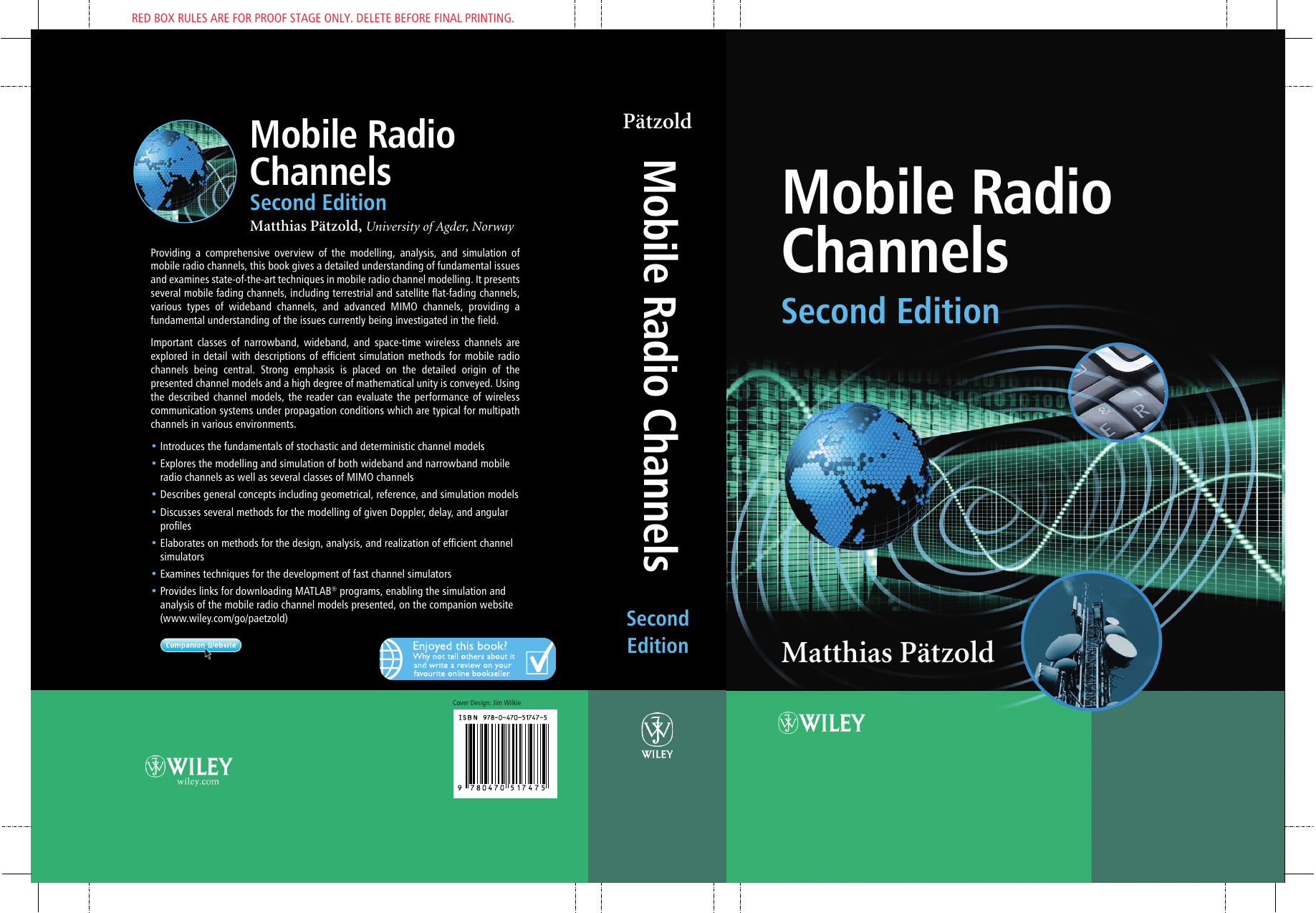

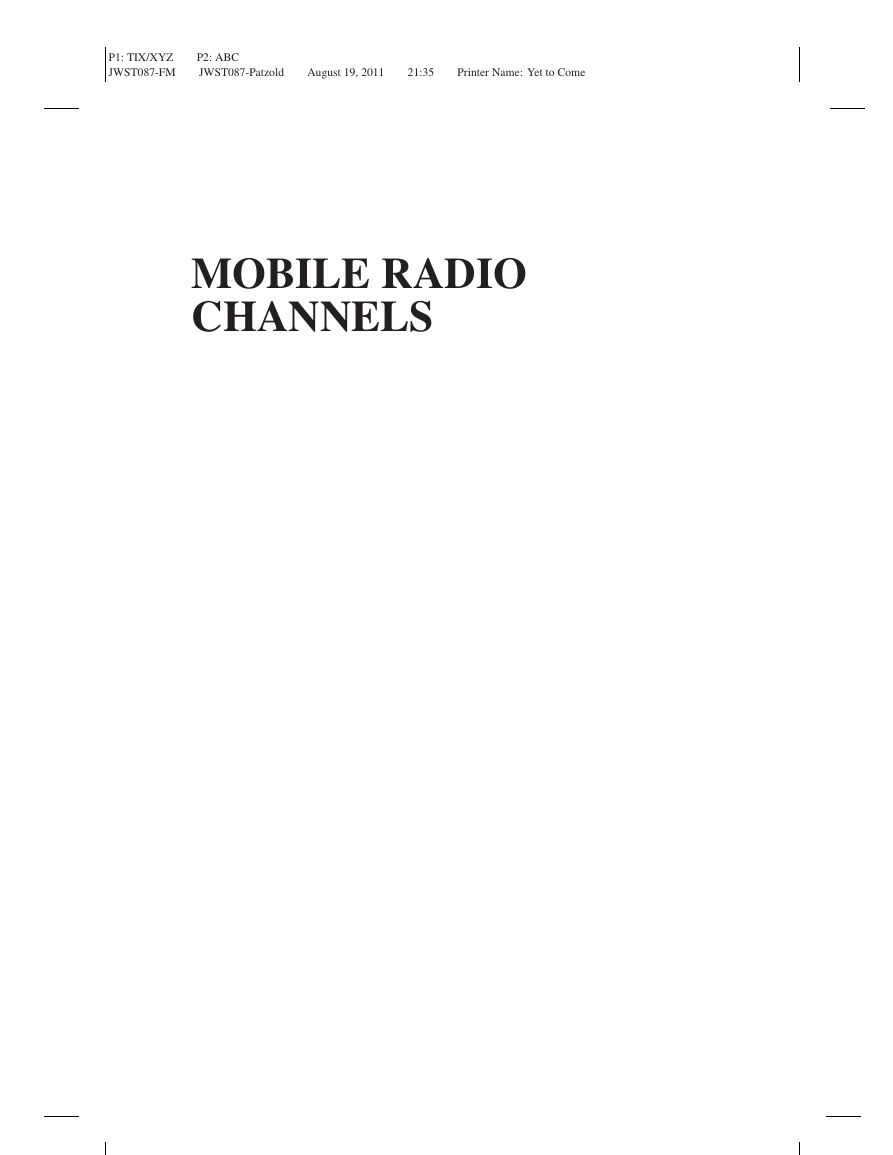

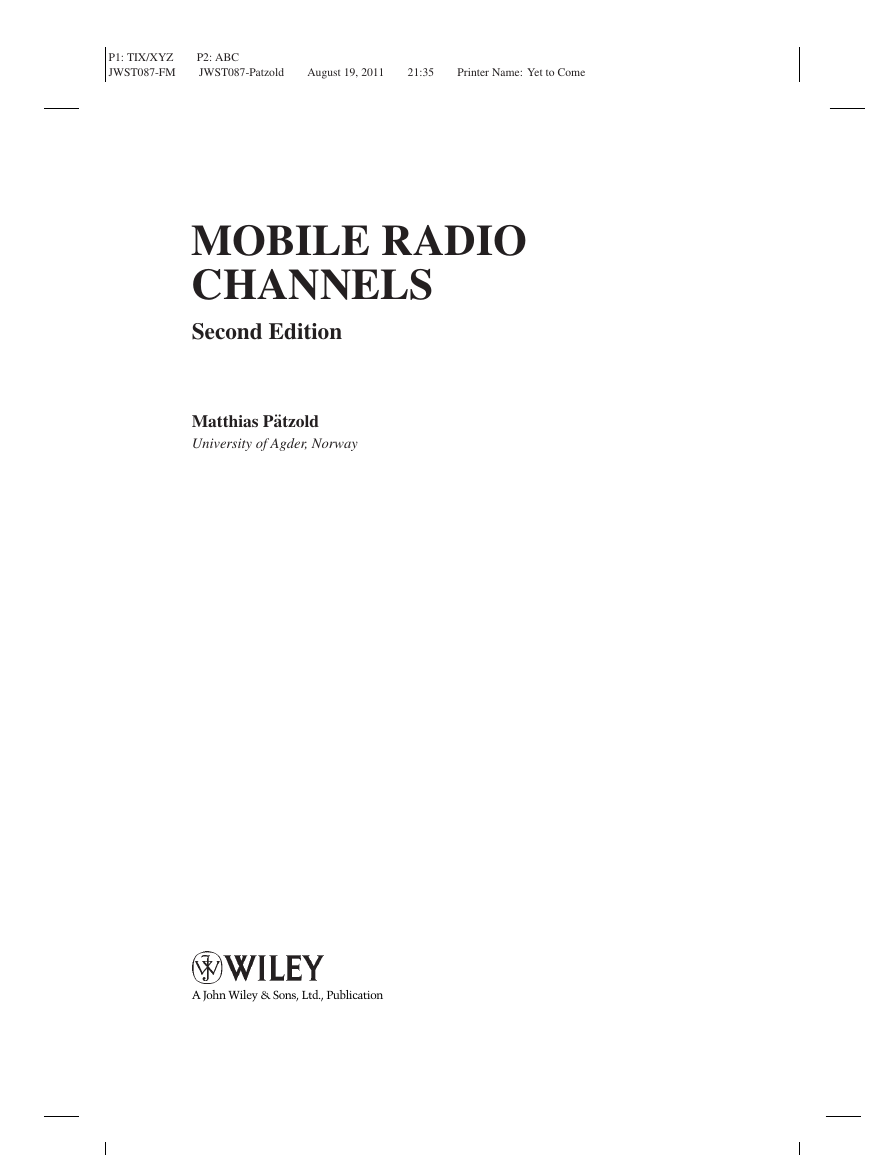
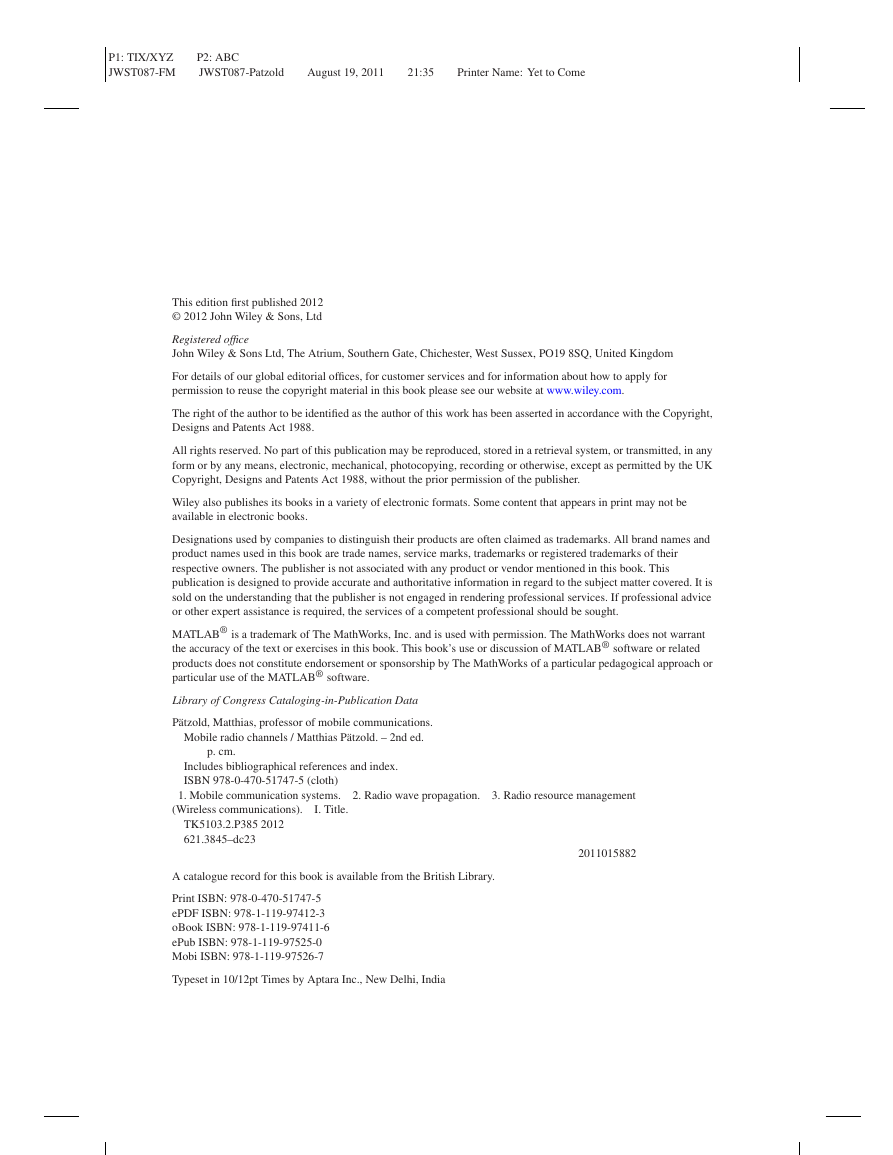
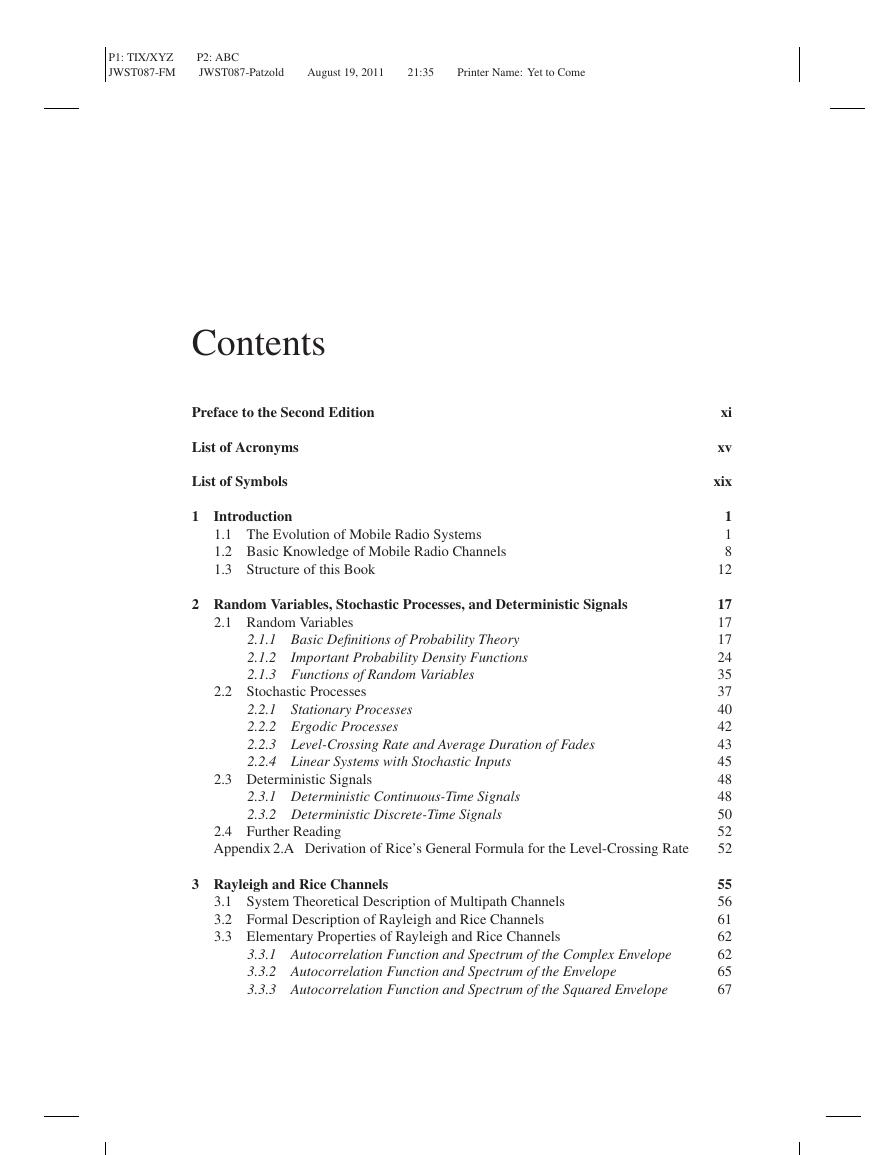
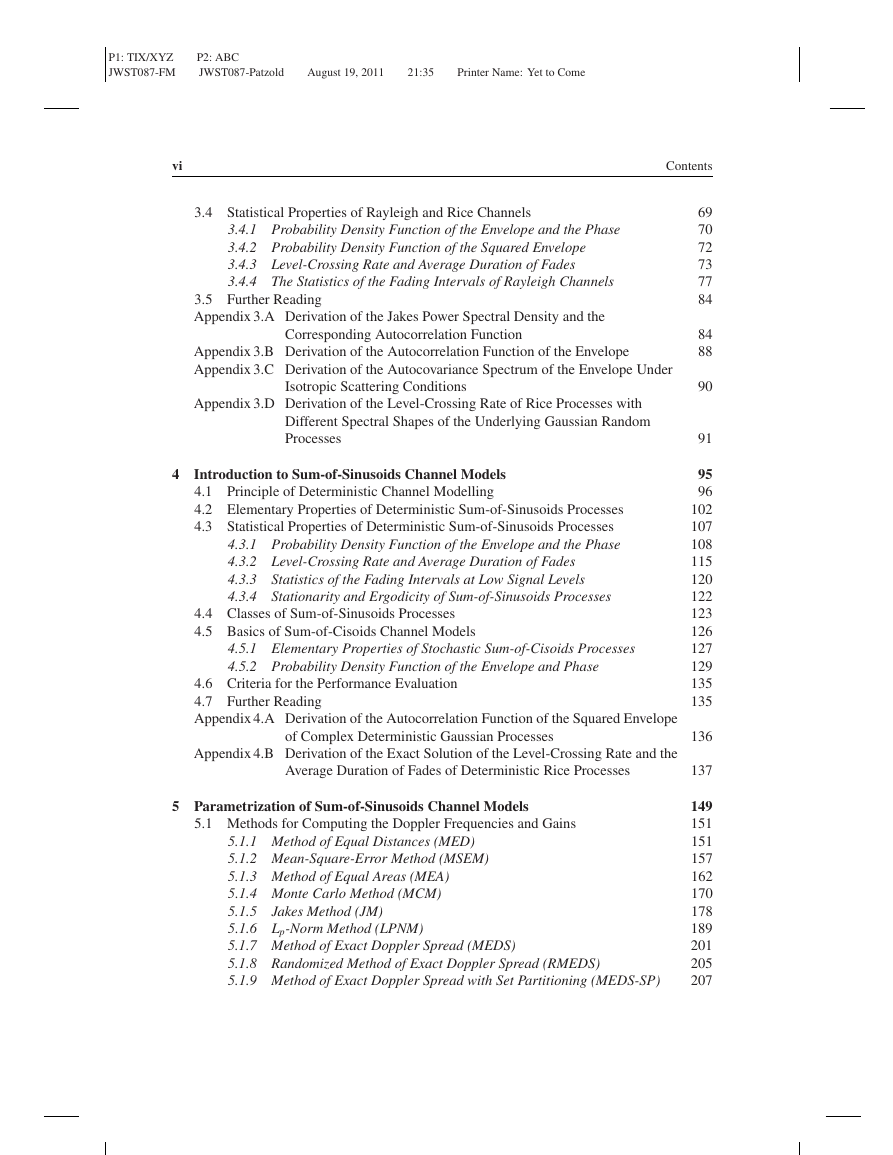








 2023年江西萍乡中考道德与法治真题及答案.doc
2023年江西萍乡中考道德与法治真题及答案.doc 2012年重庆南川中考生物真题及答案.doc
2012年重庆南川中考生物真题及答案.doc 2013年江西师范大学地理学综合及文艺理论基础考研真题.doc
2013年江西师范大学地理学综合及文艺理论基础考研真题.doc 2020年四川甘孜小升初语文真题及答案I卷.doc
2020年四川甘孜小升初语文真题及答案I卷.doc 2020年注册岩土工程师专业基础考试真题及答案.doc
2020年注册岩土工程师专业基础考试真题及答案.doc 2023-2024学年福建省厦门市九年级上学期数学月考试题及答案.doc
2023-2024学年福建省厦门市九年级上学期数学月考试题及答案.doc 2021-2022学年辽宁省沈阳市大东区九年级上学期语文期末试题及答案.doc
2021-2022学年辽宁省沈阳市大东区九年级上学期语文期末试题及答案.doc 2022-2023学年北京东城区初三第一学期物理期末试卷及答案.doc
2022-2023学年北京东城区初三第一学期物理期末试卷及答案.doc 2018上半年江西教师资格初中地理学科知识与教学能力真题及答案.doc
2018上半年江西教师资格初中地理学科知识与教学能力真题及答案.doc 2012年河北国家公务员申论考试真题及答案-省级.doc
2012年河北国家公务员申论考试真题及答案-省级.doc 2020-2021学年江苏省扬州市江都区邵樊片九年级上学期数学第一次质量检测试题及答案.doc
2020-2021学年江苏省扬州市江都区邵樊片九年级上学期数学第一次质量检测试题及答案.doc 2022下半年黑龙江教师资格证中学综合素质真题及答案.doc
2022下半年黑龙江教师资格证中学综合素质真题及答案.doc